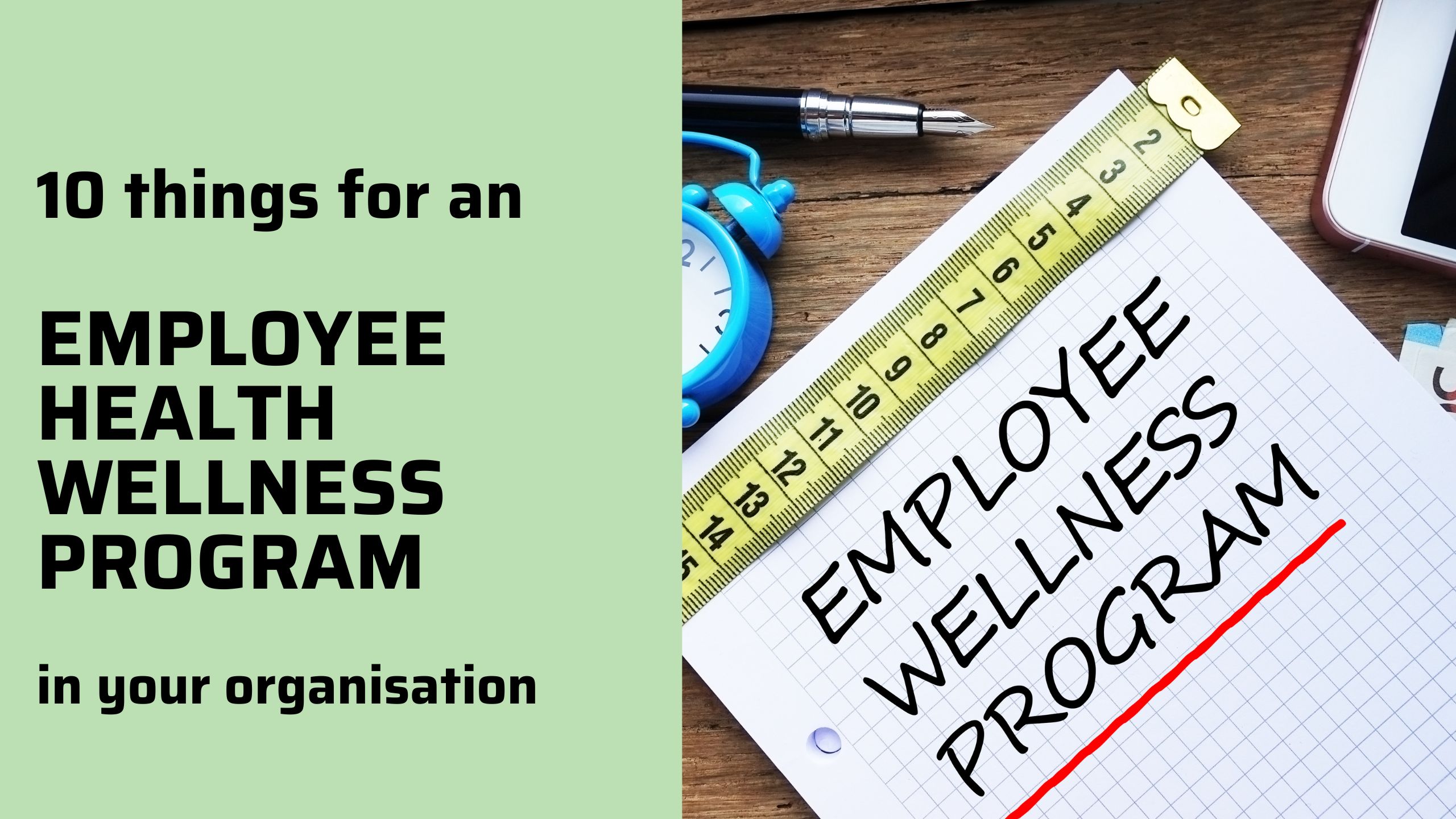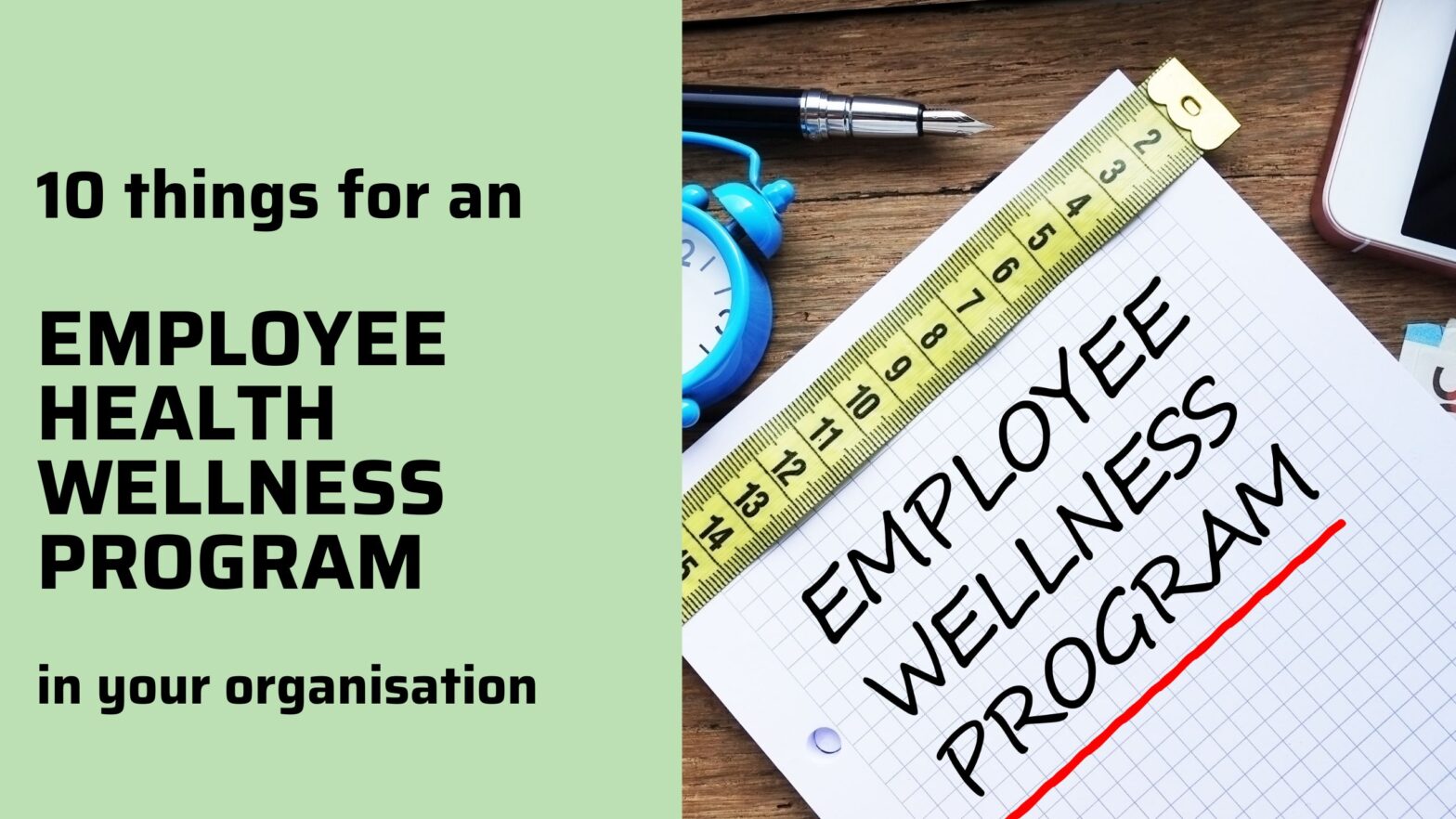
Combatting decrease in employee performance and productivity is a real day-to-day Challenge. Many organisations today are finding newer and innovative ways to keep their employees engaged and motivated. The common thread that runs across the companies that are Great Place to Work is a successful employee health & wellness program. Starting an employee wellness program definitely requires a significant commitment and investment of both time and resources.
Following is a list of 10 things that you should consider before making the big decision for an Employees Assistance program
1. Reason to start a Health & Wellness Program.
Defining the “why” is critical to the success of every employee health & wellness programs. This is the first question we ask every client who is contemplating with wellness program idea. The two keys reasons we see is a) they want to improve the overall health of the employee and also lower the employee-related expenses; b) organisation feels it is their way of enhancing employee engagement, reduce attrition or simply because they feel it is the appropriate thing to do for their employee and to create a lively, fun workplace.
Although both the reason seems to be right but it critical to define the “WHY” as both would require a different type of wellness program. The first reason would require focused yet comprehensive program, which could be common for all employees to tackle reduction in employee-related expenses. The latter mostly focuses on creating a fun workplace and may not yield a thorough outcome.
2. Determine Wellness program Success factors
This the second most important attributing factor towards the success of employee wellness programs. Many organisations take a Band-Aid approach towards wellness program without having clear measurable. So here’s what we generally recommend organisation to think about-
- How would your workplace look like after three year wellness program deployment
- What does success means to your organisation and how does it loo like? Describe the success
- What would you measure to determine the success of the program and justify the investments on the program?
These question will help you make the right selection if you chose to outsource and partner with wellness experts companies. It also aids is customizing the wellness program around the needs of the employee as well as success factors. Deliberation on these points also is a dipstick to check if you organisation is ready for it or needs more time and clarity
3. Nature of workforce
Deeper understanding of the nature of workforce and its dynamics is paramount. The industry, geography, multi-locations, demographics are undeniable important. Every organisation has certain challenges that are very specific to the industry and the business they are in. For example Retail, e-commerce, BPO, hospitality, these are industries where the attrition and employee turn over being really high. The off-role employees and Temporary staffing are also other factors that organisation need to be mindful about.
4. Wellness program coverage:
If one of the objectives of your wellness program is to reduce the employee healthcare expenditure, would then be open to extending a full benefit to all or few; do you plan to include immediate co-dependent of the employee like spouse, children, and parents. But if you are aiming at improving the overall health of the employee extending it to the significant co-dependent is essential. We at Café Counsel understand that it is important to include the significant dependent of the employee in the wellness program and so we make the wellness program benefit available to them as well.
5. Management & Leadership buy in:
Against the most popular belief, as wellness program is cannot be a standalone activity driven by the HR function alone. Kick-starting a wellness program with limited or half-hearted support from the leadership could visibly reduce the effectiveness of the program. The decision to start a wellness program for the employee must be one that gets maximum buy in from the Leadership and other key influencers in the organisation; although it’s seem extremely noble to start however can be a daunting task to remove the benefits if the program fails to prove the its merits.
Leadership team participation and being a part of wellness initiatives can unquestionably be attributed to the overall success.
6. Outsourcing or setting up a internal team:
Asking you internal team to run the wellness program may seem worthwhile instead of engaging with professionals, perhaps not successful. Wellness program and employee assistance program need a thorough expertise and greater customization. Running blood check-up camps, or stress camps or obesity workshops etc. are not wellness program. Organisations typically succumb to running the program internally but seldom produce results. Wellness programs run internally often fail to increase employee participation rates and sustain long-term initiatives. Against the popular belief outsourcing wellness program are far more economic and brings in innovative approach. Finding the right wellness company based and customizing the program according to the needs couple with internal health & wellness committee has proven to be the successful. The organisation must be mindful of the quality of the services provided to the employee is an important factor.
7. Funding the wellness program:
Employee wellness program aims at achieving a more holistic approach towards employees’ health. Once the organisations decide in the favor of wellness program, creating the right budget that would meet the employee expectation as well the organisation health goal is extremely critical for the success and sustenance of the program. Organisations could take three different means to fund the wellness program:
- Full funding by the employer
- Partial funding by employer and the balance funding can be done by the employees
- Contracting with various health service providers emphasizing the benefit of scale to get concessions/discounts, which can be then passed on to the employees. The employees in turn bear the cost of the wellness program but enjoy the benefit of the negotiated rates.
Once the organisations has clarity on the objective of the wellness program competitive budgets can be formulated accordingly.
8. Offering wellness program as perk or a benefit:
Employee wellness program can be offered either as incentives or as employee benefits. Offering its as incentives, purges the worry to reach the goals or generate positive outcomes. Incentive based wellness program can range from smart wearable, flexible working hours, free health food detox vacation, gym membership etc. However if wellness program is perceived as employee benefits, including health insurance, employee assistance programs, dental care, obesity/weight programs, maternity care programs etc. needs strategic decision making with long term commitment.
9. Workplace culture:
A wellness program requires a long term and leadership participation. It requires a cultural shift as well. If the organisations wish to produce maximum results out of their wellness program should make changes in the workplace environment. Employee health challenges like obesity, stress are worsened due the sedentary lifestyle, unhealthy food habits and lack of physical exercise courtesy the long hours spent at workplace. Organisation must certainly consider bringing in holistic changes in the work environment that encourages employee to adapt healthy lifestyle choices.
10. Readiness to live without employee wellness program.
More than employee engagement, Health and wellness program are becoming a must due to rise in health issues, however sustenance of the wellness program needs a thorough deliberation. Organisations and the decision makers must understand that one size fits all approach may not work. They must be mindful about the goals they set as well as the success factors.
A successful workplace employee wellness program is more that just running a series of activities and interventions. It requires a substantial efforts, time and resources. Including employee during the decision making process either through surveys or town hall meets can provide valuable inputs in developing an effective employee wellness program.
Lakshmi Sreenivasan is the Founder of Café Counsel, Online E-counselling platform. Café Counsel’s CEAP (Corporate Employee Assistance Program) essentially is an employee wellness program specifically designed to help employee to resolve range of diverse issues, which could be adversely affecting their performance at work, health and over-all well-being.
To know more about CEAP or request a demo please connect with us at ceap@cafecounsel.com

